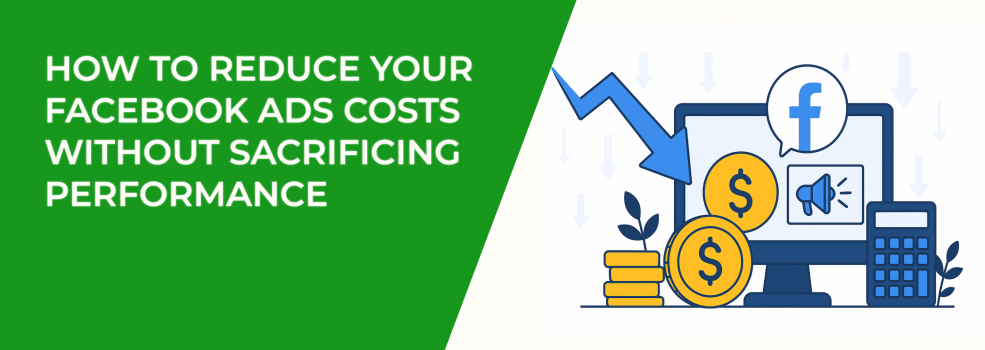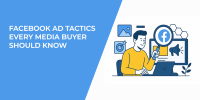Running Facebook or Instagram ads can be incredibly effective, but only if your costs are under control. Many advertisers see budgets grow while results stay flat or even decline. The problem isn’t always the platform. Often, it’s how campaigns are set up, tested, and optimized.
The good news? You can bring costs down without losing performance. Here’s how to approach your campaigns more strategically.
Start with relevance, not just reach
One common mistake is assuming that more reach will automatically deliver better results. But on Facebook, relevance is often more important than volume.
The platform uses relevance diagnostics — like quality ranking, engagement rate, and conversion rate — to determine how much you’ll pay to reach your audience. If your ads feel generic or off-target, expect to pay more.
Instead, aim to:
-
Speak directly to a well-defined audience,
-
Focus your message on their pain points or desires,
-
Use creative that feels personal and clear.
Even a smaller campaign can outperform a broad one when it's tailored and relevant. When people engage with your ad, Facebook rewards you with better placements at lower costs.
Test thoughtfully and stay focused
Testing different versions of your ads is essential. But many advertisers test too much at once, making it hard to know what’s actually working.
A better approach is to isolate your variables:
-
Test one change at a time — such as the headline, image, or CTA,
-
Keep all other elements consistent so results are easy to interpret,
-
Let your test run long enough to collect reliable data (usually 72+ hours).
This kind of structured testing gives you clearer answers — and avoids burning budget on confusing or inconclusive experiments.
Improve your targeting strategy
With Facebook’s ongoing targeting changes, interest-based targeting has become less reliable. Lookalikes have also lost some precision. But there are still powerful ways to reach the right people.
Start by using first-party data:
-
Upload your customer lists and segment them by behavior or purchase value,
-
Create lookalikes based on recent, high-value customers,
-
Retarget people who visited your site, added to cart, or engaged with your content.
When targeting cold audiences, avoid going too broad. Instead:
-
Layer interests with demographics like age, gender, or device,
-
Exclude converters or past buyers to reduce wasted impressions,
-
Refresh audiences regularly to avoid fatigue.
Smart targeting helps you cut down on irrelevant impressions — and makes every click more likely to convert.
Upgrade your creatives
Your creative has a direct impact on cost. If your ad doesn’t catch attention quickly or doesn’t clearly communicate value, people scroll past. Facebook notices, and you end up paying more per impression.
Focus on the basics:
-
Make your visual clear and eye-catching,
-
Use copy that speaks to a real problem or benefit,
-
Include a CTA that feels natural and useful.
For example, a short video showing how your product works can perform better than a static lifestyle image. Even a simple motion element or animated text can increase engagement.
When your creative improves, so does your relevance which means better results at a lower cost.
Need help producing creative quickly? These AI-powered tools can save you time without sacrificing quality.
Take control of budget allocation
Facebook’s Advantage Campaign Budget feature automatically distributes your budget across ad sets. In theory, it should optimize spend for performance. But in practice, it sometimes allocates too much budget to weaker ad sets.
To stay in control:
-
Consider setting manual budgets at the ad set level, especially during testing,
-
Monitor ad set performance daily — and pause underperformers early,
-
Use dayparting if your conversions happen at specific times of day.
Don’t assume automation will always work in your favor. Small adjustments to how your budget is distributed can have a significant impact on cost efficiency.
Optimize for ROAS, not just clicks
Not all clicks are created equal. If you’re optimizing for link clicks or traffic, you might lower your CPC — but end up with low-quality visits that never convert.
Instead, focus on outcomes that matter:
-
Use conversion-focused objectives, like purchases or leads,
-
Monitor cost per acquisition (CPA) and return on ad spend (ROAS),
-
Use value optimization to prioritize users who are likely to spend more.
The goal isn’t just to generate activity — it’s to generate profitable outcomes. Keeping your focus on value-based performance helps reduce wasted spend and improves your overall return.
For deeper insight into ad efficiency, this article shows how to analyze Facebook ad performance beyond surface metrics.
Final thoughts
Reducing Facebook ad costs doesn’t require drastic changes. Often, the biggest improvements come from tightening your strategy and removing inefficiencies.
To recap:
-
Improve relevance by refining your message and creative,
-
Test systematically, one variable at a time,
-
Use first-party data and smarter audience layers,
-
Take control of budget allocation and avoid over-reliance on automation,
-
Focus on outcomes — not just activity.
These changes might seem small, but together they can lead to a major reduction in ad spend — while keeping your performance strong.
Ask yourself: are you paying for meaningful engagement, or just impressions?
The more intentionally you manage your campaigns, the more impact you’ll see from every dollar.

